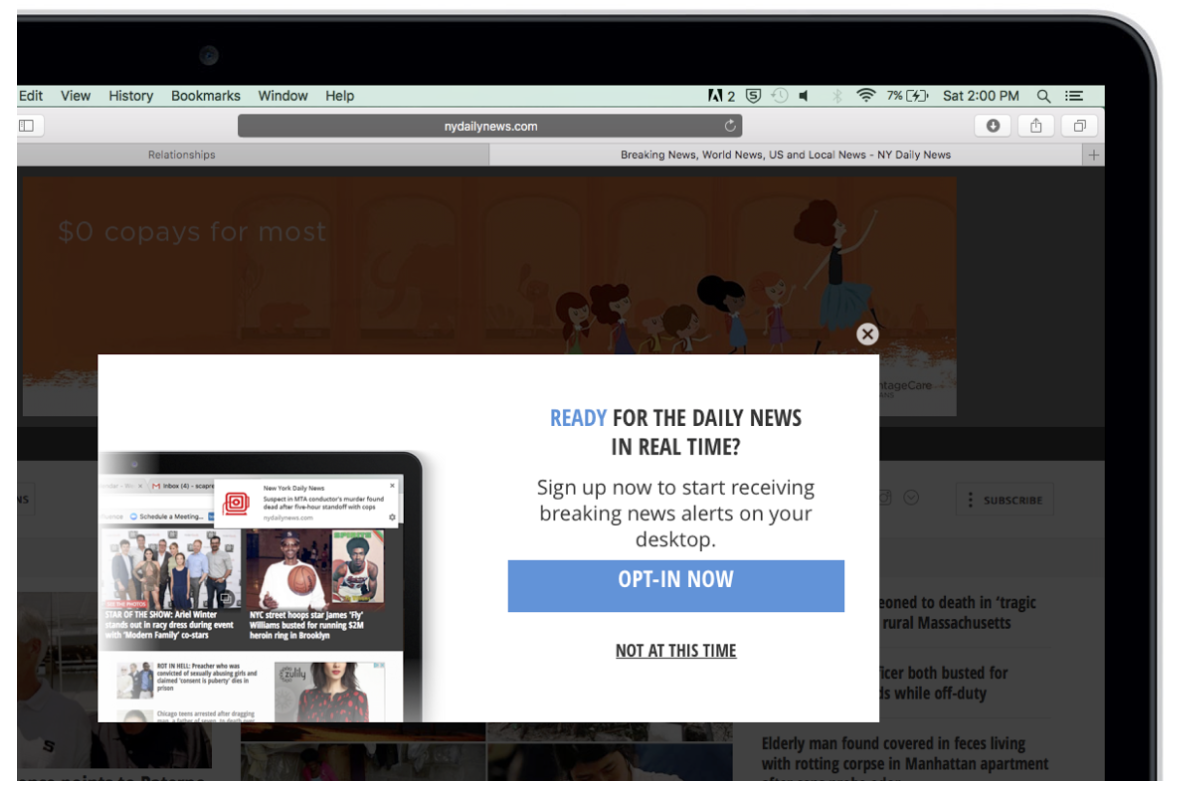Want to Make the Most Of Web Push? You’d Better Do This First
Published on September 28, 2017/Last edited on September 28, 2017/3 min read


Todd Grennan
Content Production Principal, Content Marketing at BrazeIt’s been a long time since anybody thought of the web as an emerging platform—more than twenty years, give or take. But while the web is well-established these days, there’s a quiet revolution happening when it comes to web-based customer engagement. Over the past couple years, web messaging has become one of the most promising new channels for customer engagement, making it possible to reach web visitors with targeted, segmented outreach on your website—and beyond.
That’s a big deal. While mobile apps get most of the attention these days, desktop web browsing still represents more than 30% of consumers’ digital time, and the mobile web is a major platform in the mobile space, clocking in at nearly 40% of smartphone and tablet users’ mobile time. With web messaging, it’s possible to reach, engage and retain more of those users and to provide a brand experience that’s consistent across mobile and desktop web channels and platforms.
But to get the full benefits of web messaging, you need your audience to buy in. Web push notifications have the ability to reach web visitors even when they’re not on your website, but only if those visitors opt in to receive them. How do you get them to do that? Follow the example of the New York Daily News, which has embraced web push priming as part of its web messaging strategy:
The message (and what makes it special)

The Daily News has a native app and already uses push to let their app users know about breaking news of interest. But while traditional push notifications a commonly used tool for keeping app users informed, web push is newer and hasn’t yet been adopted to the same degree, raising the prospect that web visitors will be confused or suspicious if asked to opt in.
To address this concern, the Daily News took advantage of another web messaging channel, in-browser messages, to set the stage for their web push opt-in request. The brand leveraged in-browser messages’ support for rich, highly-visual content to include an image that clearly conveyed exactly what sorts of messages readers would receive if they opted in, selling their audience on the benefits of web push. Plus, by using an in-browser message to prime users to enable web push (rather than just activating the system prompt) the Daily News can nudge users who declined to enable the channel to do so in the future, without requiring them to navigate deep into their browser’s settings.
Final thoughts
What the Daily News is doing here isn’t complicated, but it is smart—and surprisingly rare. By priming for web push, the brand is communicating to its audience that there’s a real value to enabling this channel, boosting awareness of an important engagement tool and increasing the chances that web visitors take action based on their outreach.
With web push enabled, brands have an easy way to re-engage lapsed customers on the web, and can communicate with users who haven’t joined their email list or downloaded their mobile app. That’s powerful.
Releated Content
View the Blog
The new inbox reality: How iOS changes are reshaping email marketing

Aparna Prasad

Experience optimization: Turning data insights into better journeys

Team Braze

December 2025 Bonfire Marketer of the Month: Jagex’s Emma Oliver
